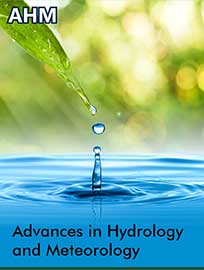 Research Article
Research Article
Assessment of Uncertainties in Rainfall and Simulated Runoff from Downscaled Global Climate Model Data in Diverse South African Catchments
Samuel Kusangaya1*, Michele L Warburton1, Emma Archer van Garderen2 and Graham PW Jewitt1
1School of Agriculture, Earth and Environmental Sciences, University of KwaZulu Natal, Centre for Water Resources Research, South Africa
2CSIR Natural Resources and Environment and School of Geography, Archaeology and Environmental Sciences, University of the Witwatersrand, Johannesburg, South Africa
Samuel Kusangaya, School of Agriculture, Earth and Environmental Sciences, University of KwaZulu Natal, Centre for Water Resources Research, South Africa.
Received Date: July 21, 2022; Published Date: September 13, 2022
Abstract
Different hydro-climatic regions are expected to respond differently to climate change. Despite the availability of downscaled climate data, there is limited knowledge about the skill of downscaled climate data in different hydro-climatic regions of South Africa. Selected catchments included the Buffel’s Catchment in the dry arid region in Northern Cape, Luvuvhu Catchment located in the semi-arid region of Limpopo, uMngeni Catchment in the sub-tropical region of KwaZulu Natal, to the Diep Catchment located within the winter rainfall region of Western Cape. This study is aimed at examining uncertainty in downscaled rainfall and its effect on simulated runoff. The ACRU Model was configured to simulate runoff using the baseline landcover of Acocks JPH [1] veld types. The percentage difference in mean, standard deviation and coefficient of variation metrics were selected for analyzing both rainfall and runoff error propagation. The Indicators of Hydrologic Alteration method was adapted to analyze runoff for each catchment. Results from rainfall analysis showed that GCMs tend to be more uncertain in the estimation of rainfall for catchments in arid areas (Diep and Buffel’s) as compared to catchments in high rainfall areas (uMgeni and Luvuvhu). Results of the annual flow variability showed wider variation in flows for catchments receiving summer rainfall (Luvuvhu and uMngeni), as compared to catchments receiving winter rainfall (Buffels and Diep). It is thus concluded that runoff simulated using GCM climate data is likely to give inconsistent results for both low and high rainfall areas, albeit in different directions: overestimation for low rainfall areas and underestimation for high rainfall areas. The overall conclusion is that, for different hydro-climatic regions, an increase in GCM resolution through more intensive statistical downscaling does not necessarily contribute towards improving the simulation of historical climate data, particularly rainfall. Subsequently, the simulated runoff would also be characterized by uncertainties, not only as inherited / propagated from the input rainfall but also compounded by the different physical catchment characteristics as defined in hydrological modelling.
-
Samuel Kusangaya*, Michele L Warburton, Emma Archer van Garderen and Graham PW Jewitt. Assessment of Uncertainties in Rainfall and Simulated Runoff from Downscaled Global Climate Model Data in Diverse South African Catchments. Adv in Hydro & Meteorol. 1(3): 2022. AHM.MS.ID.000511.
-

This work is licensed under a Creative Commons Attribution-NonCommercial 4.0 International License.






